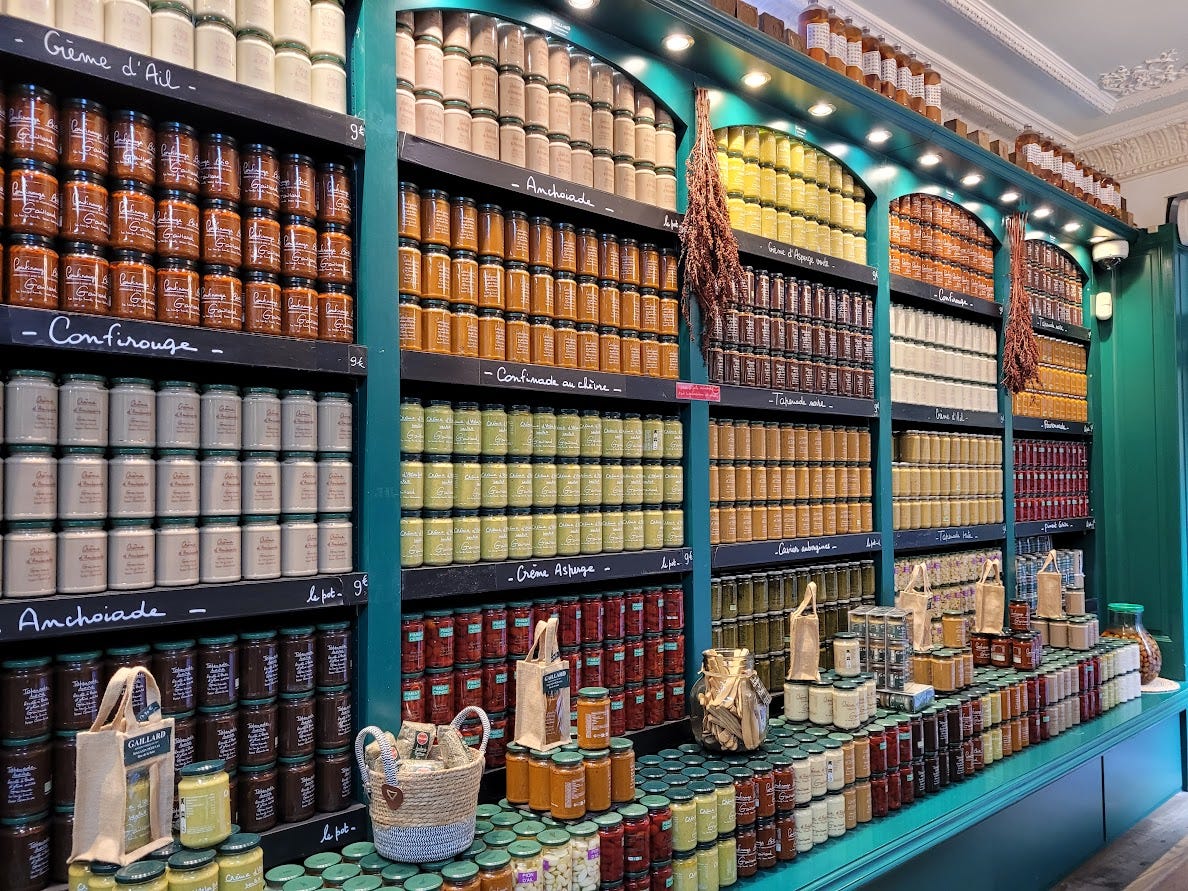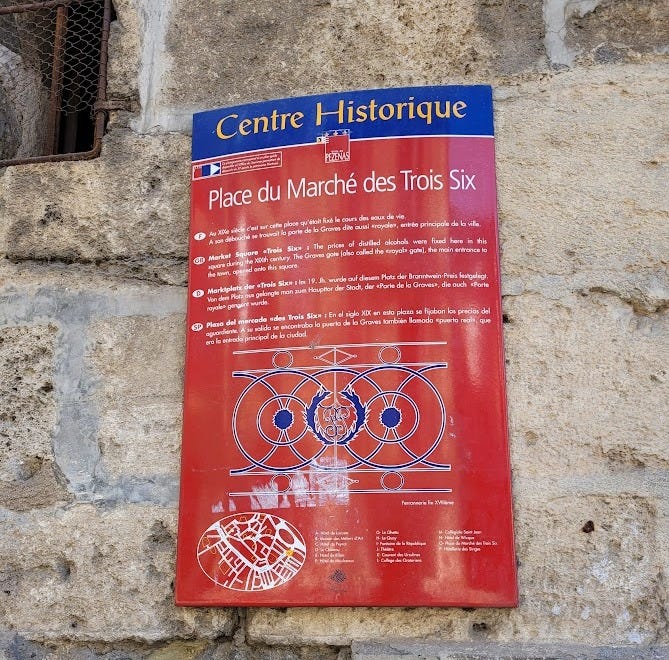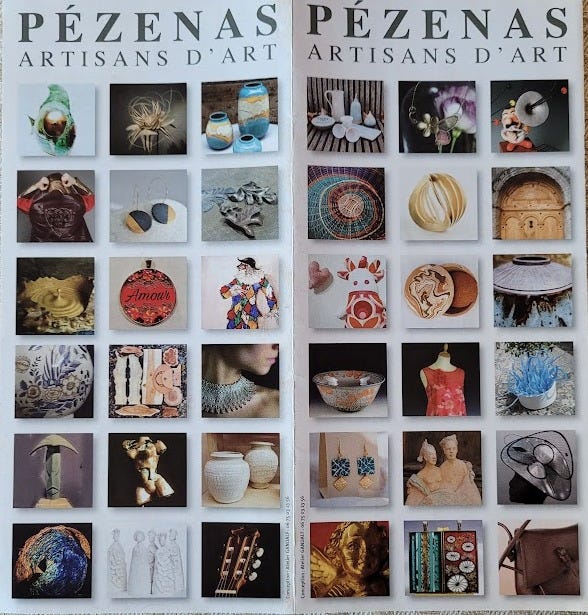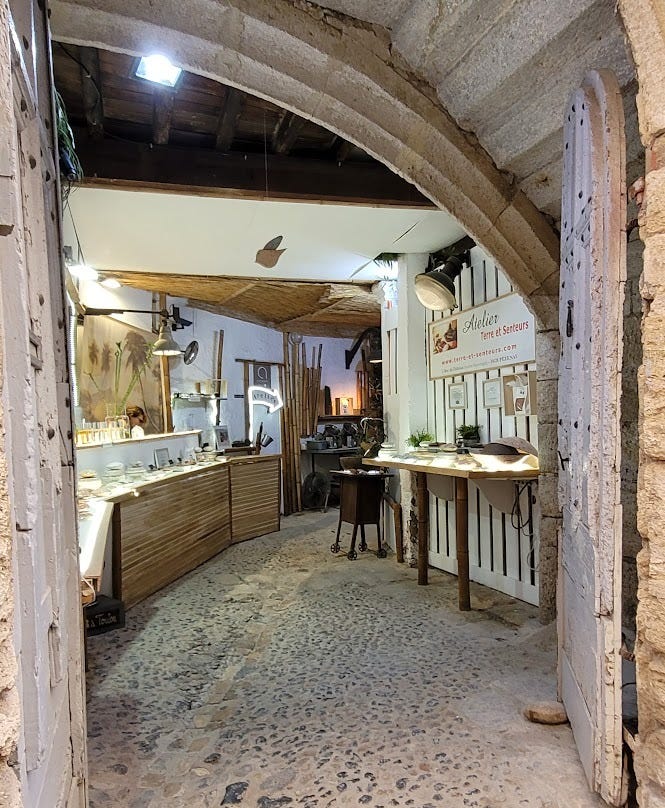First, a special welcome to my new subscribers! If you want to know what France in Between is about, take a look here; if you’d like to start out by reading a few of my most popular posts, try here or here.
As I nibble away at visiting France’s small to middling towns, I’m becoming acutely aware of my recurring themes. Fractured history. Fun facts. Museum reviews. Glimpses of fabulous architecture. That “funny ha-ha” encounter — or a “funny strange” one.
These will come in due time for Pézenas, Hérault, Occitanie. But for the moment, it’ll be all about the shopping — a deeper topic than you may think.
Despite a population of just 7,788 Piscénois and Piscénoises, Pézenas is home to nearly 50 specialized food purveyors and over 100 shops and stores.
Restaurants and cafés? Trip Advisor lists 101, a figure easily rivalling towns 3 times its size.
As I roamed about the historical center, I saw nary a forlorn, shuttered shop that would lead to somber reflection about the death of French local commerce.
On the contrary, I found a surprising abundance of places to part with my money, and proceeded to do so.
Yet how in the world can such a small town keep so much business afloat?
A historical tradition of trade
As early as the Middle Ages, Pézenas was granted special business privileges thanks to its close ties to royalty: specifically, the right to hold foires, or official and protected merchant fairs of regional and even international scope. The first one was attributed by Louis IX in 1262. During the 15th century, the Marché des Trois-Six set market prices for raw materials used for textiles as well as, of all things, the going rate for brandy.
The term 3/6 has something to do with the proportion of water to alcohol, but I’ve just spent 20 minutes going down that boozy rabbit hole, so we will carry on.
Many more markets followed and prospered until at least the early 19th century.
Commercial history gets hazier after that, but thriving trade undeniably survives here to this day.
Pézenas is now known in these parts as an antique, vintage, and brocante hub, with most stores slightly outside of the historical center, but I decided to totally skip that potentially time-absorbing scene.
However, I still spent a ton o’ time in shops, which is quite out of character for someone who’s been known to come home from a trip with nothing but a tin of sardines.
Here’s what what happened.
An official network of craftspeople
Pézenas boasts a dense network of artisans, creating and selling all year in their workshops-cum-boutiques.
I tend to associate artisanal activity more with scenic villages here in France, but not so much with bona fide towns.
What about you? Do you know of any smallish French towns especially known for artisans?
The craftspeople of Pézenas had the brilliant idea of creating a colorful and highly visible sign to distinguish them from the retail outlets that set up only for the tourist season.
Whatever your fancy, from ceramics to jewellery to hats, you’re likely to find a workshop of interest in Pézenas — and many have kept traces of their building’s historical architecture.
I splurged at this leather goods maker’s…
…and decided I really could use a bit of jewellery elsewhere.
The city has even transformed one of its finest historical buildings, La Maison des Consuls, into La Maison des Métiers d’Art, showcasing creations from all over France.
If you’re interested in design and craftsmanship, Pézenas will please you. The official artisans generally work there all year with the exception of January, but some open their shops off-season on Saturday mornings only .
Attractive seasonal shops
As I finished my early evening exploration of the workshops, I somehow ended up with a kinda sorta appointment to do some clothes shopping the next morning, this time in a boutique saisonnière.
I stayed true to my word, showing up early at La Vilaine, one of the town’s many independent clothing stores.
Just like shopping in the crafts workshops, this became a pleasant, personal experience.
After my 10th try-on, the shopkeeper and I discovered we had something in common: she had married an Irishman in 1990, the year I married my French husband.
After my 20th try-on, I learned she had spent decades teaching French in Ireland, much as I spent nearly 30 years teaching English here in France.
By the 30th, a bond had formed. We had shared information I won’t be sharing here — sorry!
Sure, I came away with some lovely cotton and linen clothing made in Italy.
But the warmth of the encounter is what stays with me today.
Money well spent?
At a time when we would all do well to think more about where and why we purchase, I felt great about my uncharacteristic splurge:
2 items handcrafted on-site by passionate artisans
clothing made in Europe and lovingly selected by a woman “of a certain age” just starting a new life back in France
scrumptious locally-made spreads/dips from La Maison Gaillard, shown in my top photo
a jar of local lavender honey
A new term has sprung up in French: consommacteur, a combination of consammateur, or consumer, and acteur, often used in French in the non-theatrical sense of “one who acts.”
There was meaning to my Pézenas shopping spree, as I felt I was acting the right way as a consumer.
(But it was a lot of fun too.)
Of course, there’s much more to Pézenas than its shops, and I’m looking forward to sharing it in my next publications.
Your support in the form of likes, comments, or a cup of coffee means a lot to me!
Sources:
Ville de Pézenas: Brève histoire de Pézenas












This sounds like my kind of town!
Poorer in a good way, for sure!